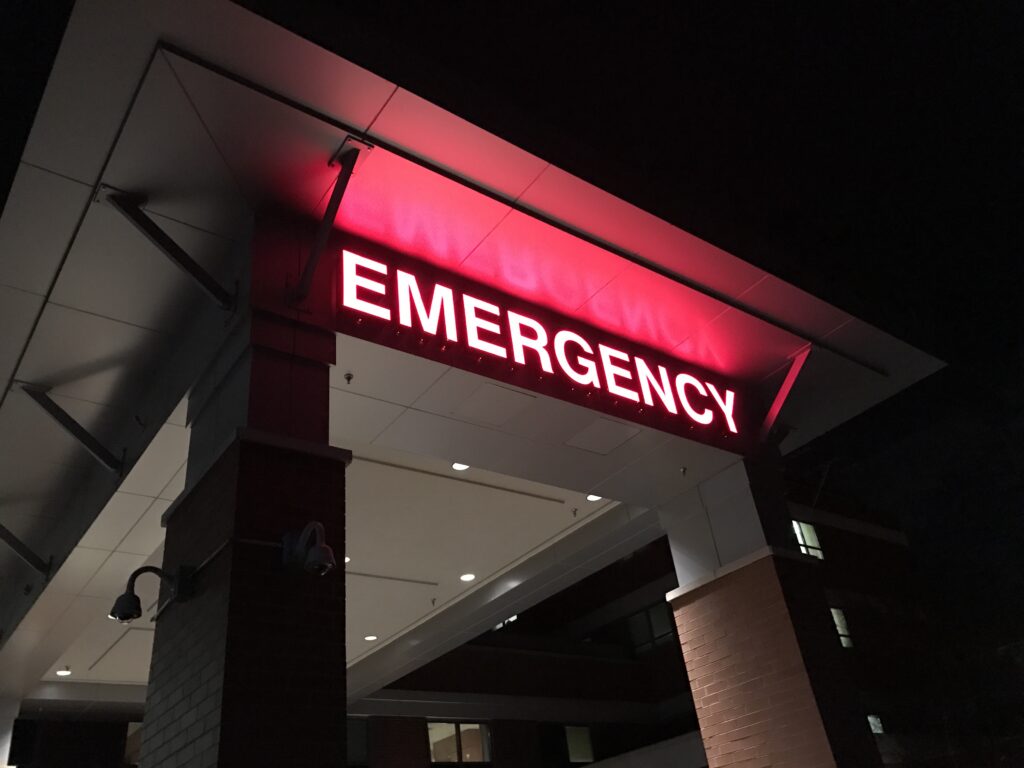Emergency departments (EDs) are intended to provide immediate, high-quality, continuous access, and unplanned care to patients experiencing medical emergencies. This indicates that EDs are not the optimal settings for non-emergency (NU) care. Patients with NU conditions are individuals that do not have life-threatening illnesses or require immediate care; hence, their care can be safely delayed without increasing the likelihood of severe outcomes.
Studies found that at least 30% of all ED visits in the United States are non-urgent, however some research, such as those based on data from the National Hospital Ambulatory Medical Survey, report lower numbers (10%). Visiting the ED for a non-urgent condition instead of another care site (e.g., a physician’s office, a retail clinic, or urgent care) may result in excessive healthcare spending, unnecessary testing and treatment, and a missed opportunity to develop long-term relationships with primary care physicians.
A visit to the emergency department is often 12 times more expensive than treatment at a physician’s office for common diseases. The most often treated diseases at the emergency room include cough, bronchitis, headache, sore throat, nausea, and upper respiratory infection— all of which may not require emergency care. And these unwarranted ER visits cost $32 billion a year.
How Avoidable ER Visits Fuel Healthcare Costs
Roughly $6 trillion is projected to be spent on health care in the U.S. by 2027, and is fueled in part by patients who seek treatment in hospital emergency rooms for health issues that a primary care doctor could likely solve, according to a data analysis released by UnitedHealth Group. The problem is the inconvenient and maybe antiquated primary care delivery system that is not always available or accessible when people require immediate treatment.
Even many years ago, there was already a widespread interest in strategies to reduce non-urgent ED visits. According to a 2006 poll, 30% of emergency physicians work in hospitals that have developed procedures to prevent non-urgent visits. Health system and payer interventions have included patient education on proper ED usage, financial disincentives such as higher copayments for ED visits, and encouraging primary care physicians (PCPs) to provide care in the evenings and on weekends. Despite these measures, non-urgent ED visits continued to increase. One explanation could be that previous efforts did not adequately address the underlying factors that cause patients to seek care in EDs for non-urgent diseases. Furthermore, efforts aimed at discouraging ED use can have unforeseen consequences. Enrollees in high-deductible health plans, for example, are less likely to seek care for a true emergency since they incur a greater proportion of the costs of an ED visit.
Overcrowding in emergency rooms is a persistent issue. It is not only costly for hospitals, but it also jeopardizes the quality of care and the patient experience. Congestion in the ER can have a number of negative consequences, including unhappy patients, poor doctor productivity due to overwork, and higher financial costs due to unnecessary medical tests.
How Telehealth Eases ER Overcrowding and Unnecessary Visits
According to Agency for Healthcare Research and Quality (AHRQ), an estimated 13% to 27% of ED visits in the United States could be managed in physician offices, clinics, and urgent care centers, saving $4.4 billion annually. In addition, with the recently COVID-19 pandemic surge, many health systems have started using telemedicine applications which promise to protect patients and providers without compromising health care access and costs.
When there is a rise in demand or a lack of supplies, the adaptation of the virtual care platform works best since it results in a greater reduction in ER length of stay. According to data published by the American Hospital Association in February 2019, 76% of hospitals in the United States use various telehealth technology to connect patients and doctors.
Remote Patient Monitoring
Experts advised Remote Patient Monitoring (RPM) as a solution to continuity of care outside the hospital environment, especially for those with chronic health conditions such as hypertension, diabetes, chronic obstructive pulmonary disease (COPD), and asthma.
All members of the care team, including care managers, clinicians, and family members can access patients’ health measurements and other crucial information such as vital signs, physical and emotional status, feeding patterns, and medication adherence. Hundreds of vital data points per patient every month can be recorded with the right RPM technology.
Next-generation RPM uses AI algorithms that can swiftly transform the data into alerts and messages based on pre-defined criteria, allowing for timely intervention. Thus, RPM drives down the costs of healthcare associated with ER visits, hospitalizations and readmissions utilizing technology to record data in the home.
RELATED: The Next-Generation RPM: How is it different?
Connected health technology contributes to increased health-care value and affordability. It saves patients time and money by reducing patient transfers, emergency department and urgent care center visits, and saving payers money. In addition, telehealth can boost physician’s revenue by converting on-call hours into billable time, recruiting new patients, and minimizing no-shows.
Takeaway
This is the right time to introduce telehealth to providers and patients in order to support the entire healthcare system. Telehealth increases access to healthcare providers, allowing people to receive better care closer to home, when they need it. This reduces the number of non-urgent ED visits, saves payers’ money, and leverages care delivery. Through videoconferencing, remote monitoring, electronic consults, and wireless communications, patients are connected to important health care services.
To know more about the benefits of Next-Generation Remote Patient Monitoring Technology, visit DrKumo Inc.









